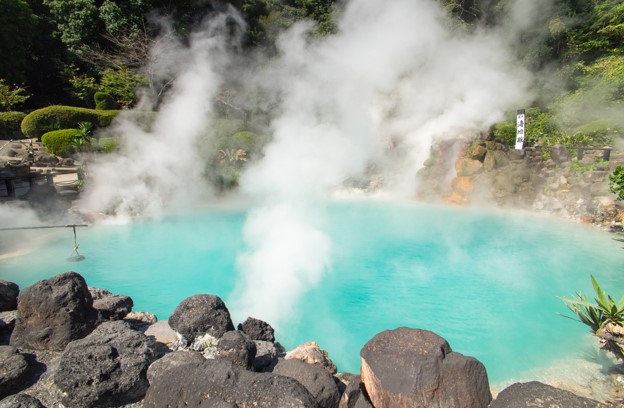Subscribe
Stay updated with our newsletter
Images provided by: depositphotos.com
Frequently Asked Questions
Q: Are hot springs natural or man made?
A: Hot springs are a natural phenomenon formed by geothermal activity, volcanic activity, and plate tectonics. While some hot springs may be enhanced or developed for tourism purposes, they are not man-made.
Q: Are hot springs actually warm?
A: Yes, hot springs are actually warm. The water in hot springs is heated by geothermal activity, volcanic activity, or both. The temperature of the water can vary depending on the location, but it is typically warmer than the surrounding air.
Q: How sanitary are hot springs?
A: The sanitation of hot springs can vary depending on the location and management. Some hot springs may be regularly tested and treated to ensure they are safe for bathing, while others may not be as well-maintained. It's important to research and check the sanitation status of a hot spring before visiting.
Q: Can you swim in a hot spring?
A: Yes, you can swim in a hot spring. However, it's important to check the temperature of the water and ensure it is safe for swimming. Some hot springs may be too hot for swimming, and others may have areas designated for swimming or have set hours for swimming. It's also important to be aware of the rules, etiquette and any restrictions of the specific hot spring you are visiting.
Q: How long can you sit in hot springs?
A: The amount of time you can spend in a hot spring will depend on the temperature of the water and your personal tolerance. It's recommended to start with shorter periods of time, such as 10-15 minutes, and gradually increase your time in the water. It's important to listen to your body and be aware of any signs of overheating or discomfort.
Q: Do you shower after hot springs?
A: It's recommended to shower before and after visiting a hot spring to maintain cleanliness. Some hot springs may have facilities for showering, while others may not. It's important to check the rules of the specific hot spring you are visiting.
Q: Why shouldn't you go underwater in a hot spring?
A: Going underwater in a hot spring can be dangerous as it can increase the risk of inhaling harmful gases, such as sulfur, which may be present in the water. Additionally, going underwater can also cause the water to become cloudy, making it harder for others to see and potentially increasing the risk of accidents.
Q: Are hot springs actually healthy?
A: Hot springs have been used for medicinal and therapeutic purposes for thousands of years. The warm water and minerals present in hot springs can help alleviate muscle pain and stiffness, improve circulation and promote relaxation. However, it's important to consult with a doctor before visiting a hot spring if you have a pre-existing medical condition.
Q: Why do Japanese wear towels in hot springs?
A: In Japanese hot springs, it's traditional to wear a small towel while bathing. The towel is used to cover the face while in the water, as well as to dry off before entering and after exiting the hot spring. This tradition is believed to have originated from the need to maintain cleanliness and hygiene in public baths.
Q: Why do hot springs smell?
A: Hot springs can have a distinct smell due to the presence of sulfur and other minerals in the water. The smell can also be caused by the release of gases, such as sulfur dioxide, from the hot spring.
Q: Can you wear a bathing suit in hot springs?
A: It depends on the specific hot spring and its rules. Some hot springs may require bathers to be nude, while others may allow for swimsuits or other clothing. It's important to check the rules of the specific hot spring you are visiting and respect the customs and culture.
Conclusion
In conclusion, hot springs are a unique natural phenomenon formed by various geological and chemical processes. From geysers to fumaroles, hot springs come in different types and each has its unique features. Geothermal activity, volcanic activity, and plate tectonics all play a role in hot spring formation. The chemical composition of hot springs is also unique, and the ecosystem that surrounds hot springs is diverse. The history of hot springs is rich, and it has been used for spiritual and medicinal purposes for thousands of years. However, the future of hot springs is uncertain due to factors such as climate change, overuse of resources, and urbanization. It's crucial to have proper management and sustainable tourism practices in place to preserve hot springs for the future.

